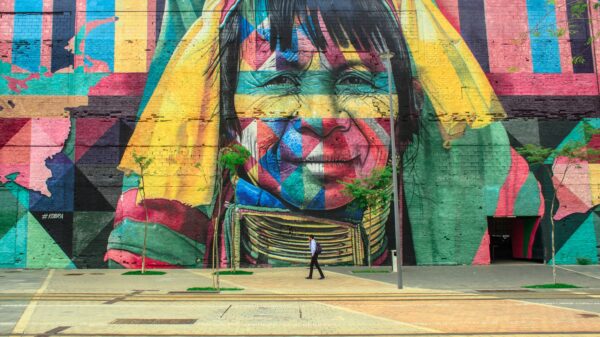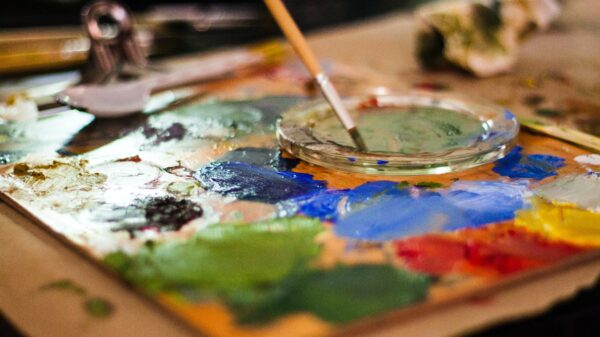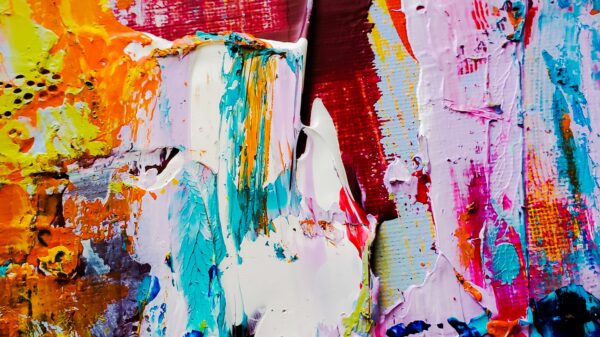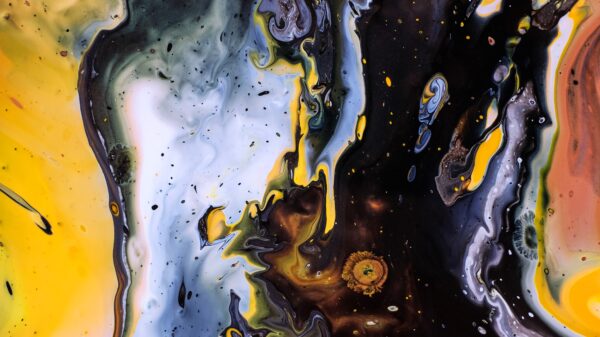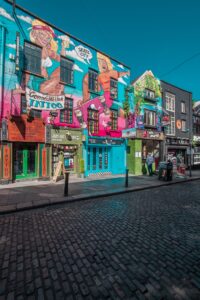
Welcome to the vibrant and captivating world of street art! If you’ve ever found yourself walking down a bustling city street, your eyes undoubtedly drawn to the stunning murals adorning buildings or the intriguing stencils spray-painted onto walls, then you are already familiar with this dynamic form of artistic expression. Street art has taken over our urban landscapes, transforming them into open-air galleries that tell stories, challenge norms, and ultimately captivate our imaginations. In this blog post, we will delve into the main types of street art and explore how they have revolutionized not only the art scene but also society as a whole. So buckle up and get ready for an exhilarating journey through the colorful streets where walls come alive with creativity!
Introduction to Types of Street Art
Street art is a type of public art that includes any form of visual art created in public spaces. It can be anything from graffiti to murals to wheatpaste posters. Street art is often seen as a form of rebellious expression, but it can also be simply about beautifying the urban landscape.
There are many different types of street art, each with its own unique style and purpose. Here are some of the most common types:
Graffiti: This is probably the most well-known type of street art. Graffiti is usually done with spray paint or markers on walls or other surfaces in public spaces. It can be used to communicate messages or just to make a statement.
Murals: Murals are larger-scale paintings or drawings that are often done on walls or other structures in public spaces. They can be used for decoration, political statements, or just to add some color to an otherwise bland wall.
Wheatpaste Posters: Wheatpaste posters are another common form of street art. They are usually made by printing out a design on paper and then pasting it onto a wall using wheatpaste (a sticky substance made from flour and water). Wheatpaste posters are often used for advertising purposes, but they can also be used for more creative purposes such as displaying artwork or spreading a message.

Stencils: Stencils are another popular form of street art. They involve creating a design on paper and then cutting out the
Graffiti Types
Graffiti is a type of street art that is often associated with vandalism. However, there are many different types of graffiti, and not all of them are illegal. Some graffiti is done with permission from the property owner, while other graffiti is done without permission but is not considered to be vandalism. Graffiti can be either positive or negative in nature, and it can be used to communicate a variety of messages.
Stencils
Stencils are a street art technique that involves using a template to create an image or design on a surface. This can be done by hand or with a machine, and the results can be very intricate and detailed. Stencils are often used to create large-scale images, and they can be combined with other street art techniques like painting and wheatpasting.
Paste-Ups Types
Paste-ups are one of the most popular forms of street art. They are usually made by printing out a design on paper or cardboard, and then attaching it to a wall or other surface using glue or wheat paste.
Paste-ups are often used to make political statements or advertise events, but they can also be simply decorative. Many street artists create paste-ups as part of larger murals or pieces, while others specialize in this medium.
One of the advantages of paste-ups is that they can be easily removed and replaced, making them a perfect choice for temporary or changing displays. Paste-ups are also relatively inexpensive and quick to create, which makes them popular with artists who want to experiment with different designs or styles.
3D Street Art
3D street art is a type of street art that uses three-dimensional (3D) elements to create an illusion of depth and movement. This type of street art is often created using chalk or paint on sidewalks, walls, or other flat surfaces.
3D street art can be used to create a number of different effects. For example, it can be used to create an optical illusion, make a flat surface appear three-dimensional, or add depth and interest to a scene. It can also be used simply for decoration or to make a statement.
There are many different techniques that can be used to create 3D street art. Some common techniques include anamorphosis, trompe l’oeil, and forced perspective. These techniques can be used alone or in combination with each other to create a variety of different effects.
3D street art is a relatively new type of street art, but it has quickly gained popularity due to its unique look and the many possibilities it offers for creativity. If you’re interested in exploring this type of art further, there are many resources available online and in libraries that can help you get started.
Murals
Street art is a form of public art that has emerged from the graffiti scene. It is often characterised by its colourful and eye-catching designs, which can be found on walls and buildings in urban areas around the world.
One of the most popular forms of street art is murals. Murals are large, usually brightly-coloured paintings or mosaics that are applied to walls or other vertical surfaces. They can be found in both indoor and outdoor spaces, and often depict scenes from nature, history, or everyday life.
Murals can be created by both professional and amateur artists, and often serve as a way to brighten up otherwise drab or neglected spaces. In some cases, they may also convey a message or tell a story. For example, many murals in cities have political or social commentary.
If you’re interested in seeing some incredible examples of street art murals, check out the websites of well-known muralists like JR, Banksy, or Shepard Fairey. Or, do a search for “street art murals” followed by your city’s name to find ones near you.
The Impact of Street Art on Society
In recent years, street art has become increasingly popular and is now recognized as a legitimate form of art. This type of art is often seen as controversial, but it can also be very beautiful and thought-provoking. Street art can have a positive impact on society by raising awareness about important issues, improving the appearance of urban areas, and promoting creativity and self-expression.
Some people believe that street art is vandalism and should be removed. However, many cities are now embracing street art and using it to revitalize rundown neighborhoods. Street art can add color and life to otherwise dull and grey urban landscapes. It can also be used to raise awareness about important social issues. For example, graffiti highlighting the issue of domestic violence has been shown to decrease rates of violence in the area where it is located.
Street art can also promote creativity and self-expression. Many people view street art as an accessible form of expression that anyone can participate in. This type of art often encourages people to think outside the box and explore their own creativity.
Benefits of Street Art
Street art can have a variety of benefits for both the artist and the viewer. For the artist, street art can be a form of self-expression and a way to communicate their ideas to the public. It can also be a way to earn income, as many street artists sell their work. For the viewer, street art can add color and life to an otherwise dull or boring environment. It can also provoke thought and conversation, and even inspire positive social change.
Challenges of Street Art
Street art can be a controversial topic. While some people see it as a form of self-expression and a way to add color and life to an otherwise bland cityscape, others view it as property damage or vandalism. This tension can lead to challenges for those who want to create street art.
First, street artists may have difficulty finding places to create their art. If they do not have the permission of the property owner, they may be at risk of getting arrested or fined. Additionally, even if they do have permission, they may still face opposition from people who don’t appreciate their art.
Second, street artists may also struggle with the ephemeral nature of their work. Because it is often created illegally, it can be removed at any time by the authorities or by angry residents. This means that street artists must be constantly creating new works, which can be difficult to sustain over the long term.
Despite these challenges, street art continues to thrive in many cities around the world. It is a popular form of expression for both emerging and established artists, and its vibrant colors and messages can bring joy to viewers while also sparking important conversations about social issues.
Conclusion
Street art is an ever-evolving form of creative expression that has been embraced by artists for centuries. From graffiti to murals, there are many ways to explore the vibrant world of street art and add a unique touch to your surroundings. We hope this introduction has given you a better understanding of the different types of street art and their potential impacts on our cities and neighborhoods. Whether you’re looking for something more traditional or something truly one-of-a-kind, there’s sure to be a style that speaks to you!

